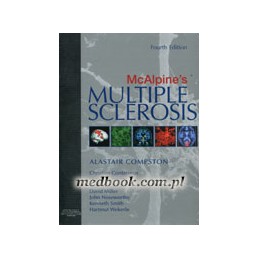- Obniżka


 Dostawa
Dostawa
Wybierz Paczkomat Inpost, Orlen Paczkę, DHL, DPD, Pocztę, email (dla ebooków). Kliknij po więcej
 Płatność
Płatność
Zapłać szybkim przelewem, kartą płatniczą lub za pobraniem. Kliknij po więcej szczegółów
 Zwroty
Zwroty
Jeżeli jesteś konsumentem możesz zwrócić towar w ciągu 14 dni*. Kliknij po więcej szczegółów
The state-of-the-art 4th Edition presents the most recent information on the genetics and epidemiology, clinical neurology, pathogenesis, and management of this common neurological disease.
Amply illustrated and referenced and beautifully written, McAlpines Multiple Sclerosis has been described as A standard reference for multiple sclerosis researchers, embryonic MS-ologists and hard-pressed clinical neurologists alike (Brain, review of the last edition).
Opis
